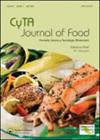Dihydromyricetin promotes LDL metabolism in HepG2 cells through the PCSK9/LDLR pathway
IF 1.7
4区 农林科学
引用次数: 0
Abstract
Low-density lipoprotein receptor (LDLR) and proprotein convertase subtilisin/kexin type 9 (PCSK9) play a pivotal role by regulating plasma low-density lipoprotein cholesterol (LDL-c) levels. Dihydromyricetin (DMY), the most abundant natural flavonoid in rattan tea, has proven anti-atherogenic effects, but the underlying molecular mechanisms remain poorly understood. Therefore, we studied the effects of DMY on LDLR and PCSK9. The results showed DMY promoted LDLR protein and mRNA expression and increased LDL uptake in HepG2 cells. DMY inhibited intracellular PCSK9 protein and mRNA expression. And it also significantly reduced PCSK9 levels in the cell culture medium. Furthermore, DMY inhibited the expression of PCSK9 through the liver nuclear transcription factor 1 A (HNF1A) and increased the protein expression of LDLR. Taken together, our results support the idea that DMY regulates LDL-c metabolism through PCSK9/LDLR signaling. This study reveals the potential mechanism of DMY’s anti-atherogenic effect and provides a theoretical basis for dietary DMY supplementation.二氢杨梅素通过PCSK9/LDLR途径促进HepG2细胞的LDL代谢
低密度脂蛋白受体(LDLR)和蛋白转化酶枯草素/酮素9型(PCSK9)在调节血浆低密度脂蛋白胆固醇(LDL-c)水平中起关键作用。二氢杨梅素(DMY)是藤茶中含量最多的天然类黄酮,已被证实具有抗动脉粥样硬化作用,但其潜在的分子机制尚不清楚。因此,我们研究了DMY对LDLR和PCSK9的影响。结果显示,DMY促进了HepG2细胞LDLR蛋白和mRNA的表达,增加了LDL的摄取。DMY抑制细胞内PCSK9蛋白和mRNA的表达。并且显著降低了细胞培养基中PCSK9的水平。此外,DMY通过肝核转录因子1a (HNF1A)抑制PCSK9的表达,增加LDLR的蛋白表达。综上所述,我们的研究结果支持DMY通过PCSK9/LDLR信号调节LDL-c代谢的观点。本研究揭示了DMY抗动脉粥样硬化作用的潜在机制,为膳食中补充DMY提供了理论依据。
本文章由计算机程序翻译,如有差异,请以英文原文为准。
求助全文
约1分钟内获得全文
求助全文
来源期刊

Cyta-Journal of Food
FOOD SCIENCE & TECHNOLOGY-
CiteScore
4.40
自引率
0.00%
发文量
37
期刊介绍:
CyTA – Journal of Food is an Open Access journal that publishes original peer-reviewed research papers dealing with a wide range of subjects which are essential to the food scientist and technologist. Topics include: chemical analysis of food; additives and toxins in food; sensory, nutritional and physiological aspects of food; food microbiology and biotechnology; changes during the processing and storage of foods; effect of the use of agrochemicals in foods; quality control in food; and food engineering and technology.
 求助内容:
求助内容: 应助结果提醒方式:
应助结果提醒方式:


